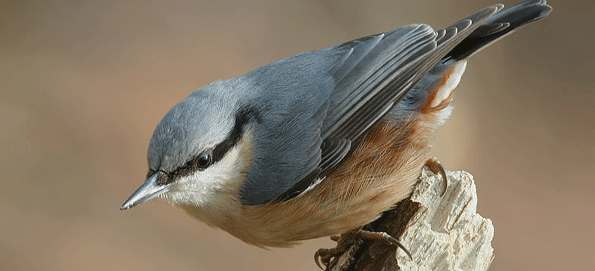
Wildlife in May
The month of May is a wonderful time to see wildlife. Our summer migrants are now here and their songs are mixed in with the residents creating a fantastic 'dawn chorus', so why not get out early to enjoy a fantastic treat this month!
The dawn chorus is in full swing this month and should be worth getting up especially early to hear.
Learning bird song is a great way to find out what birds are around even when they are difficult to see. It can either be achieved through hours of experience or by going out with someone in the know, perhaps on a guided walk event. If you are not so much of a morning person then why not visit the RSPB website where you can find a species from the alphabetical list and listen to a clip of bird song from your chosen bird.
Once you can recognise a bird by its song you can quickly tell what species are about, but of course it gives you no clues to the other species which are silent. The male birds are the singers. They sing to proclaim their territory and ward off competitors, but they also sing to attract a mate. Different species will sing at differing times of the day. Some sing early at dawn when their food supply is still hard to find and when their songs carry the best. Some sing during the night (famously the nightingale) where they are the most noticeable without other noises to distract.
In the park the best time to hear bird song is very early in the morning! But you can enjoy a walk at any time during the day and still hear a variety of bird calls including great tits, greenfinch, woodpigeons and collared doves.
Our blue tits, great tits, robins, blackbirds and song thrushes will all be busy seeking out food to feed their young. After one or two broods the blue tits particularly look frazzled!
Other things to look out for:
- In May the short lived adult mayflies emerge only to mate and then die after 24 hours. The nymph stage lives for a year and are an important food source for our river fish.
- Maybugs (also called cockchafers) appear this month in search of a mate. The large brown beetles emerge from the soil where they have lived as larvae for up to 4 years. They have a rather clumsy buzzing flight, often flying around trees as they feed on the foliage and flowers.
- Red campion and greater stitchwort replace the early spring flowers.
- Flowering trees – hawthorn is flowering in the hedges (the early blackthorn flowers have died off) and towards the end of the month elder flowers will join them.
- In wet hollows the carnivorous sundew plants are catching insects on their sticky hairs. Once caught the plant digests them to make up for the low nutrients in the soil.
- The swan’s cygnets will hatch this month after being laid in April or early May.







